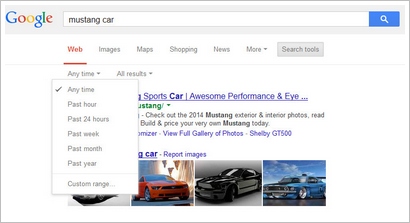
How on earth are we supposed to pick a supplier, manufacturer or service nowadays, when everywhere you look there are conflicting user reviews, which both praise and condemn at the same time? It’s a minefield of truth, misinformation and downright lies, right? Well not quite. If you know what you’re doing you can definitely make great purchases you’ll be happy with for a long time. We thought we’d offer our own short guide to making a sensible and informed buying decision in the age of the noisy opinionated online mob.

We’ve just switched from plain old ADSL broadband to a sooper dooper high speed fiber optic connection here at Ferret Towers. Bonus, it’s costing less money than before, for unlimited bandwidth at jaw dropping speeds down the boring old phone line from the cabinet. Who would have thought it? Here’s a nice little image above to let you see the lovely reality we woke up to this morning.
Mmm…nice!
But the fact is, it took several weeks to stump up the gumption to make the switch, even though in retrospect the decision seems to be completely obvious. The reason for the hesitation was twofold. First, we’d been with our existing supplier for years and they were pretty good to us (except they were too expensive, had bandwidth limits and were totally uninterested in keeping me as a customer) and second, it was hard get a clear picture from my research as to which would be a reliable company to switch to.

And therein lies a problem we’re increasingly facing nowadays – trying to make sure we choose the best product or service for our needs, without falling for fake company recommendations and other false promises on our way to the cash till. The best way to achieve that is to have some sort of plan, a way of making sure you chart the optimum path towards the truth. A kind of buying process manifesto.
Our process for buying anything of value is to split the process up into three distinct stages:
Research, Evaluation and Deal Finding
BEFORE WE START

Depending on the value of the intended purchase, you’re going to need time to do a proper amount of research. Sure if it’s a new teapot, you’re probably not going to spend days hunting (unless you’re a connoisseur of antique silver pots), but for anything which has a decent value, you should allocate at least a day or two to filter out the noise and start to hone in on the potential winners. It amazes me every time I see people who spend a mere half an hour hunting for cheap flights or vacations, when with a little more work, they could got a much better deal. It’s either laziness or incompetence, but in these days of Google it doesn’t make sense.
Recommended time matrix:*
Goods/Services under $50 – spend a few hours in your evaluation (optional?)
Goods/Services over $100 – spend a day
Goods/Services over $500 – spend two days
Goods/Services over $1000 – spend at least a week
Goods/Services over $5000 – as long as it takes, Johnny
* Note that if you’re a city banker with a 7 figure salary, a) why are you reading this tripe and b)you’ll have someone to do this buying stuff for you anyway. In a similar vein the rest of us need to make sure we don’t spend too much of our valuable time in the hunt, otherwise the ROI clearly works against us. But never forget it’s not just the return on investment that counts, but also personal satisfaction that makes the results worthwhile.
RESEARCH

1. Spread your net wide, my child!
In order to do your research justice you’ll need to spread your net wide. It’s fairly obvious that if all you do is spend 20 minutes reading up on a few Amazon reviews you’re only going to get a limited picture of the value proposition. And often even that can be skewed. See (2) below. We decided to buy a juicer a few years back, triggered by one of those massively annoying VitaMix demos at an expo we visited. Convinced that no juicer was worth what they were asking, I spent literally months (we were in no hurry) pulling in information, data, reviews and opinions from as many sources as I could, both on the VitaMix and alternatives.
I didn’t do it all at once of course, but every so often I would fire up the browser and do another search and browse to see what popped up on the subject of ‘best juicers’ or ‘smoothie makers‘ or whatever phrase grabbed my fancy during the session. During that time I must have visited scores of online foodie forum discussions, product review sites (obviously places like Amazon and reevoo.com are great places to start) and basically anywhere I felt I would find some more information to add to the story.
In the end, after nearly going for a product which was half the price but with a weaker motor, we sucked up our pride and bought one of the infernally expensive VitaMix machines. And we’ve loved every minute of the thing for more than three years. In this case the product’s reputation was actually deserved, as we discovered.

2. Be suspicious of outliers
The most annoying thing about user reviews is how variable they can be. In the blue corner you’ve got Joe who ‘loves loves loves’ his Acme because it really does ‘xyz‘, while in the red corner Sharon thinks the product is the biggest rip-off of the decade, and the company treated her like dirt when she complained…blah. Who on earth are we to believe?
It’s a big problem, made more so by the fact that all of us, deep down, know that clever companies hire people to seed forums and review sites with favorable views, and they’re getting better at it too. While the newbie Chinese companies are still at the stage of pushing their ‘awesome product, so useful, definitely 5 star’ reviews, the wiser, older Western marketeers sprinkle very persuasive ‘I’m not usually a fan of Acme, but…‘ reviews with 4 stars and a lot of credible justification added to the mix. It’s hard to tell they’re a shill.
So let’s start at the beginning of wading through these reviews to find the gems.

a. Discount most of the outlier reviews. This means discounting the short reviews with 5 stars on Amazon which are not ‘Verified Purchase’ or Real Name. And sometimes even if they are verified and Real Name. It’s brutal, but it gives you some sort of standard by which to operate. If you find a 5 star review which goes into depth about both the plusses and the minuses, and offers suggestions for best use (or who will find the product most useful etc) then you can forget this rule and add it to your ‘Source’ list for later evaluation.
Don’t forget to ask questions of this type of reviewer in the Amazon comments either, it can be very helpful to see what kind of replies you get. A real reviewer will be delighted to help you out with additional information and updates on their experiences with the product. It’s a great way to get under the skin of a review too, to find out specific things.

Discounting the one star reviews also helps to get rid of the haters, the impossibly fussy, the crazies and rival company shills. Again take note of well reasoned, in depth reasons why something deserves a single star, but even then, unless you spot a definite trend for that product (see also Evaluation 1 below), it’s unlikely that one single experience represents a general mood (as with 5 star reviews too of course). Read on for details of how to evaluate the options and make the best choice!
b) Once you’re left with the remainder of the reviews, you can start sifting through, looking for longer reviews, more insightful comments on the product, reviews which clearly demonstrate a working knowledge of the limitations of the product (‘it’s great for truffles, but completely froze when we tried to make Wellington Boots because of the tiny flange’) and so on. After you’ve read up on a few of those reviews, you’ll start to notice which ones ring true and which don’t. And if you’re unsure, ask a question.
c) Read the forums. Often the results will be quite old, so you may have to select Search Tools on Google search and select ‘Past Year’ to try and get more time relevant results, but even older posts can be a treasure trove of information. The trick here is to **read the whole darn thread**. Really. Don’t just read the first 3 comments on the product, but go through the whole list of comments even if it’s 10 pages long.

And then read another thread covering a different area of the product or service. All of it. And so on. Now you see where the time comes in. The reason you’re being so nauseatingly thorough is because in amongst the wibble in these comments are little pieces of gold; snippets of experience with the product, links to the user manual, details on their warranty procedures and all that sort of stuff which generic user reviews won’t deliver.
We recently needed to get hold of a camcorder, and I spent a couple of weeks hunting around all the specialist video and video equipment forums looking for informed users and their views on the product. It really helped me choose a product I like a lot. Don’t be discouraged if you read negative comments in amongst the forum results, treat these as sources to throw into the mix, so you’ve got something to balance when you sit down to do your evaluation.
It’s no good just having rave reviews to evaluate, you need to know the downsides of the product too (and every product has them) in order to make sure you’re happy with the compromises you’re going to make.
**Because the one thing to remember when you’re buying stuff is – IT’S ALWAYS GOING TO BE A COMPROMISE!
There are always going to be things you don’t want or need which are included, and things you want which are omitted. And the price is unlikely to be exactly what you started out looking for, and so on. Just make sure that the process gives you enough information to ensure that you’re happy with the compromises and you’ll come out with some seriously good post-purchase satisfaction scores.

3. Be cautious of MSM (or blog) reviews
We’re not sure whether this is worth mentioning, but just in case you don’t know yet – be very cautious about mainstream media (and increasingly also online blog and tech sites) reviews. This is not because I’m dissing the journalists or bloggers that are writing these reviews (let’s face it, I are one, right?), but because these reviews are often done in a hurry, since they’re typically designed to be part of the topical early news cycle on a product.
There are exceptions of course, namely those sites and mainstream media whose goal is to deliver long form, deliberately unrushed and therefore not particularly ‘newsworthy’ reviews, and they’re gold dust, so use them as part of your source mix. Examples would include TrustedReviews.com, imaging-resource.com, the-gadgeteer.com and any decent ‘living with…‘ type reviews which cover more than just the specs and a quick look at the main features.
Newspapers usually do not have the space to do this kind of in-depth review any more, and even specialist magazines nowadays have problems, because they’re typically using younger, less experienced reviewers who simply don’t know what questions to ask as they go through the review process.

The problem with many of the reviews by smaller blogs is they’re done under extreme time pressure and typically by one-person operations who again don’t have the time and experience to ask the right questions of the product or service they’re reviewing. The less scrupulous sites are actually nothing more than a front for affiliate marketing, so the ‘review’ will be nothing more than a puff piece designed to get the reader to buy from the link, and so earn the ‘blogger’ cash.
You can tell these sites by the fact that any so-called review is almost completely focused on the features and positive aspects of a product. There’s no detailed context, comparison with rival products, and no attempt to offer expert, informed responses to reader enquiries on the comments area of the site.
One mainstream media platform which is becoming extremely valuable is YouTube of course. The fact is that video reviews, if done properly, offer the kind of in-depth hands-on immersion that the printed word can’t match. Done badly of course, they’re no better than a shill site, but again you’ll be able to tell bad video reviews because they won’t be reviews, they’ll just offer a brief list of features, cover a couple of key points and link to a purchase site. No context, no details, no comparisons. But maybe some nice music!
EVALUATION

1. Look for patterns
By now, if you’ve been doing the kind of in-depth research your product deserves, you’ll be starting to build a solid picture of a) the product features and comparative benefits with regard to rivals and b) the quality of the manufacturer/supplier in terms of warranty, guarantees, support etc etc. So your next task is a simple one. You’re looking for overall patterns.
In the same way that we earlier advised you to ditch outliers, you’re now looking to find a consensus viewpoint out of all the sources that you have gathered together. By the way, ‘gathering’ in this sense doesn’t have to mean anything complicated, just a collection of web bookmarks and maybe the occasional print-out of tables and comparisons to jog the memory will often be all you need.
Dedicated buyers will often gather up product brochures, notes from a visit to a showroom or store and other materials, it’s really down to you how far you want to go.
The pattern you find now is the core of your evaluation, and it is what will eventually lead to your ‘gut decision’ to buy one product or service over another.

2. Evaluate the downside
By now you’ll be in a position to evaluate the compromises and downsides of what you’re thinking of buying, in light of the positive and negative feedback your sources have delivered to your eyes and ears. By this time you’re probably close to being a dangerously boring expert on the subject of waffle-makers, and friends and family know enough to stay well clear or leave the room rapidly when you open your mouth and utter the words in conversation.
Don’t worry, you’ll soon forget everything you’ve learned once the object sits gleaming in its new position in your home or office.
3. Minimize the risks
Your penultimate job in evaluation is to start minimizing the risks associated with buying the product. This can mean anything from finding an optimum way of financing it, or selecting a supplier with secure return and refund policies, to choosing the service which gives you the fastest payback in relation to the price you are paying your current supplier and so on.
When we chose our new fiber optic service, a good part of the final evaluation was how quickly we would achieve payback through the savings in monthly spend, even though we were compromising by having to sign up for an 18 months agreement. The figure came out fast enough to minimize the risks in our mind.

4. Phone a friend
The final evaluation task is to find a local friendly expert – family, friend or business colleague – who you can run your shortlist past to get some last minute advice and suggestions before you make your final choice. This may be hard or easy depending on the complexity of the product or service and your location. Those who live in the depths of the Alaskan mountains may have a harder time finding a washing machine expert than those in Brooklyn, New York, but in these cases even an intelligent (mandatory!) enthusiast will be of some help.
The ideal is to find someone who is already a user of the product or service themselves, or who has direct experience of some part of your shortlist, so you can bounce the choices off them, and make sure you’re not making any horrendous last minute mistakes which you’ve missed. This step is one which many people avoid, and unfortunately that means they miss out on a real potential life-saver, especially with high tech purchases such as tablets, smartphones, computers or similar.
But if you don’t have the ability to do this, don’t despair, we recommend that you make more use of the forums and review comment sections to ask your final questions instead. It may not be as personal, but at least you could get some valuable last minute advice – even if your question is the most basic, ‘I’m torn between the Acme 2000 and the Beta 3040, any advice…?
DEAL FINDING

1. A deal means more than just cheap
By now you should be rock solid on your choice of purchase (or at least a final two options where you’re not really bothered about either) and so it’s just a matter of finding the best deal. Do remember at this point that deal doesn’t just mean price. The cheapest price may seem attractive, but a slightly more expensive price with lower risks (e.g. better returns policy, guarantee or support) can be a much better deal, especially if you’re buying something complex, high value or technologically advanced.
2. Leg work counts
This part of the process really just involves virtual and real leg-work, schlepping around online stores, visiting local store sites, and generally hunting out price-finder sites to see where you can get the best overall combination of price, features and after sales security. The fact that you’re now a master of the whole market sector the product or service is in, makes finding a deal much easier, because you can weigh up the compromises quicker, and plump for the one that closest meets your needs without worrying whether you’re making a good choice. That bit has hopefully already been done several steps back.
And so you’re done. You’re now the proud owner of a vacation package, steam powered toaster or engagement ring which will hopefully last you for many happy years of service. If you enter into the process with as few preconceived ideas as possible, you’ll probably come out the other end more than happy with your final choice.

And finally, do please remember to try and help others after you’ve finished your purchase by leaving your own reviews, feedback and helpful comments, so that those engaged in the same process behind you can make use or your experience and new found wisdom to help make a similarly great choice. Enjoy your new product!
Let us know in the comments if you have any buying tips or better ways of keeping your shopping fruitful. We’re all ears!
Continue Reading… 1 2 [View All]



